- full price € 15 at the box office - € 14 online
- reduced price € 12 at the box office - € 11 online
– for young people aged between 18 and 25 (not yet turned 25);
– for groups of 15 people or more;
– La Galleria Nazionale, Museo Ebraico di Roma ticket holders;
– upon presentation of ID card or badge: Accademia Costume & Moda, Accademia Fotografica, Biblioteche di Roma, Centro Sperimentale di Cinematografia, Enel (for badge holder and accompanying person), FAI Fondo Ambiente Italiano, Feltrinelli, Gruppo FS, IN/ARCH Istituto Nazionale di Architettura, Sapienza Università di Roma, LAZIOcrea, Palazzo delle Esposizioni, Amici di Palazzo Strozzi, Accademia Nazionale di Santa Cecilia, Scuola Internazionale di Comics, Teatro Olimpico, Teatro dell’Opera di Roma, Teatro di Roma, Università degli Studi di Roma Tor Vergata, Youthcard; - open € 18
valid for one year from the date of purchase
- free
– minors under 18 years of age;
– myMAXXI cardholders;
– on your birthday presenting an identity document;
– upon presentation of EU Disability Card holders and or accompanying letter from hosting association/institution for: people with disabilities and accompanying person, people on the autistic spectrum and accompanying person, deaf people, people with cognitive disabilities and complex communication needs and their caregivers, people with serious illnesses and their caregivers, guests of first aid and anti-violence centres and accompanying operators, residents of therapeutic communities and accompanying operators;
– MiC employees;
– journalists who can prove their business activity;
– European Union tour guides and tour guides, licensed (ref. Circular n.20/2016 DG-Museums);
– 1 teacher for every 10 students;
– AMACI members;
– CIMAM International Committee for Museums and Collections of Modern Art members;
– ICOM members;
– from Tuesday to Friday (excluding holidays) European Union students and university researchers in art history and architecture, public fine arts academies (AFAM registered) students and Temple University Rome Campus students;
– IED Istituto Europeo di Design professors, NABA Nuova Accademia di Belle Arti professors, RUFA Rome University of Fine Arts professors;
– upon presentation of ID card or badge: Collezione Peggy Guggenheim a Venezia, Castello di Rivoli Museo d’Arte Contemporanea, Sotheby’s Preferred, MEP – Maison Européenne de la Photographie;
Collection
MAXXI’s Collection of Art and Architecture represents the founding element of the museum and defines its identity. Since October 2015, it has been on display with different arrangements of works.








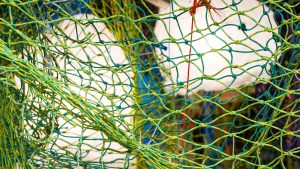







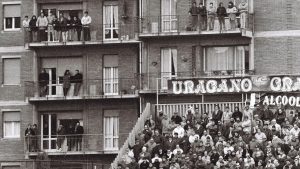

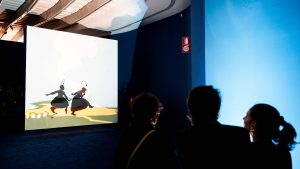













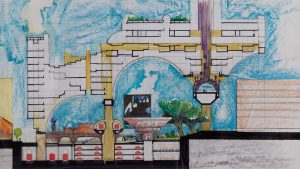


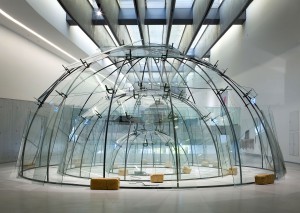



30 May 2010 – 23 Jenuary 2011
Manipolazione di cultura / Manipolation der Kultur, 1976, 11 photographic prints transferred to canvas, acrylic, 45 × 72 cm each, Associazione per l’Arte Fabio Mauri, Rome.
One of Fabio Mauri’s most significant works on the theme of the ideological instrumentalization of language, Manipolazione di cultura originated as an artist’s book, published in 1976 by the publisher La Nuova Foglio. Mauri drew on the original lithographs to create a series of plates, which he used for exhibitions in the years thereafter. The results are large canvas-backed photographs with a tripartite structure: in the upper part is a documentary photograph of Nazi and fascist iconography, in the central zone a monochromatic black-painted band, and in the lower part a phrase describing the action depicted in the impersonal, alluding to the subject. The actions refer to the power of cultural “manipulation” that totalitarianism utilized as an instrument of conquest and to maintain power. With this and other works, Mauri exposes the “root of evil” hidden within the ideology and language that sustain it.
Il muro occidentale o del pianto, 1993, suitcases, bags, chests, leather, canvas and wood wrappings, ivy plant, canvas-backed photograph, 400 × 400 × 60 cm, Associazione per l’Arte Fabio Mauri, Rome.
This work – one of Fabio Mauri’s most representative pieces – is made up of a series of old leather suitcases piled up and arranged so as to create a four-meter wall with a regular front surface and an irregular back one, adorned only with a small ivy plant and a 1970s photograph of his first performance (Ebrea). The wall, an explicit reference to the Wailing Wall in Jerusalem, becomes the symbol of all exiles, all diasporas in which “a sense of transmigration, an infinitely initiating story of the sorrow of the world, is evident”, as the artist himself indicated. In a maniacal attempt to create a regular surface by composing a diverse collection of individual elements, the artist sees the possibility of brining any and all types of diversity into balanced coexistence.
Fabio Mauri was born in 1926 in Rome, where he died in 2009.